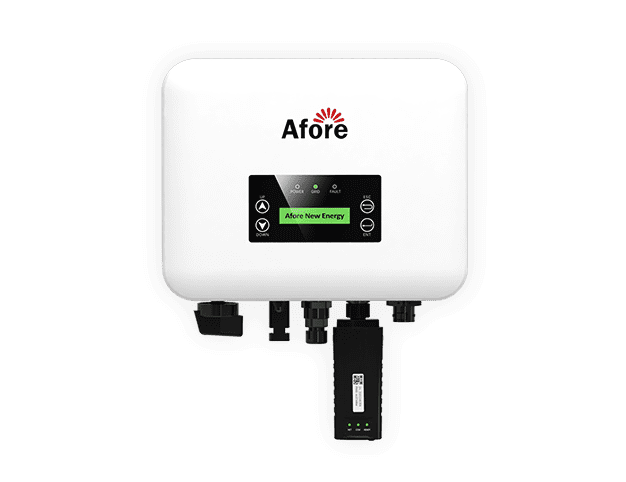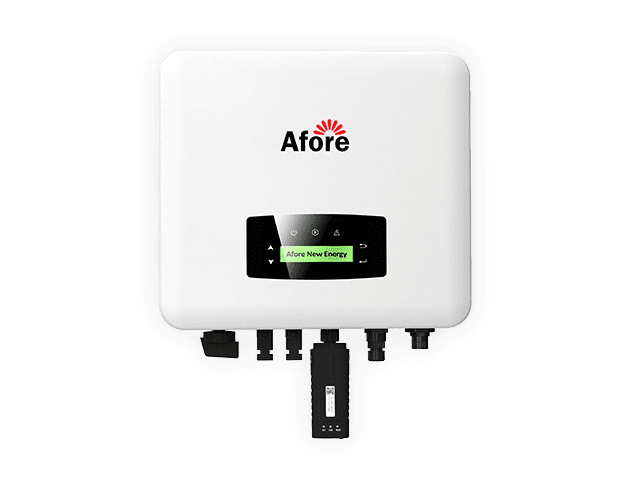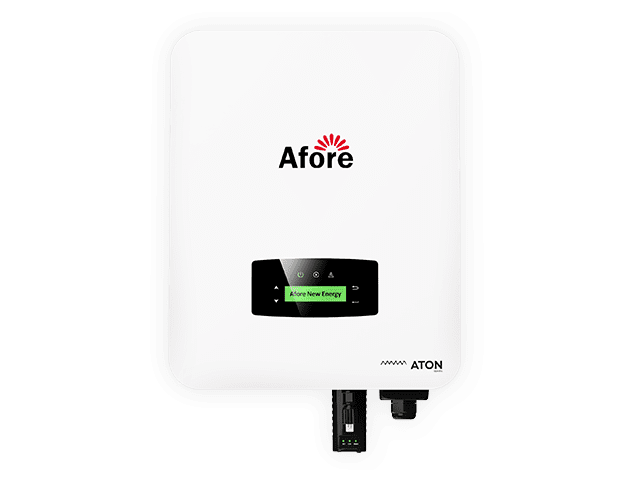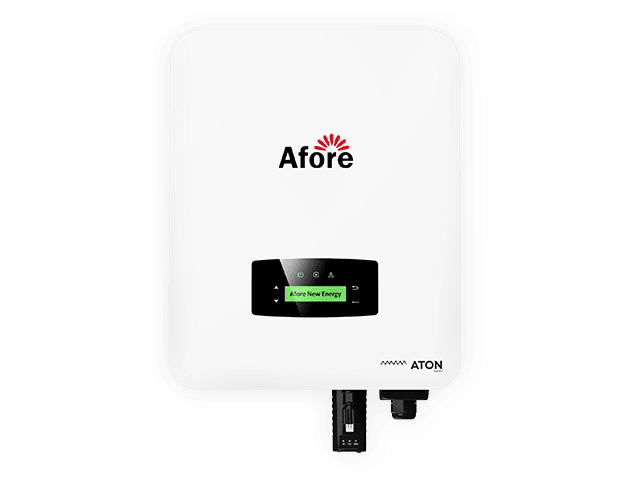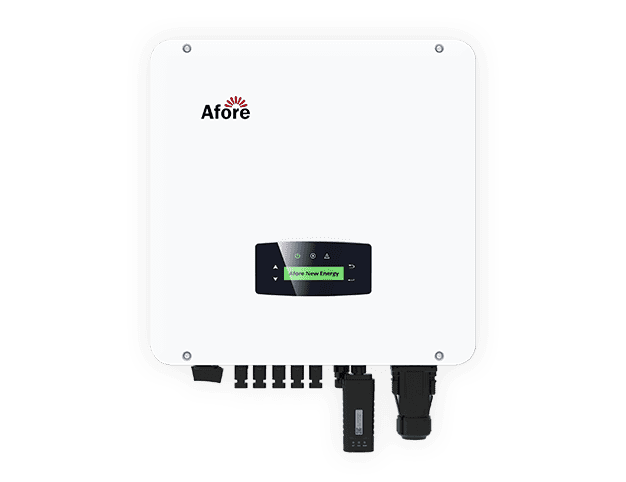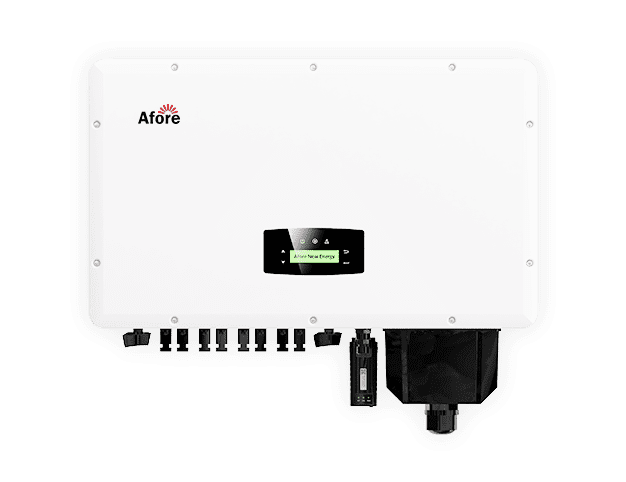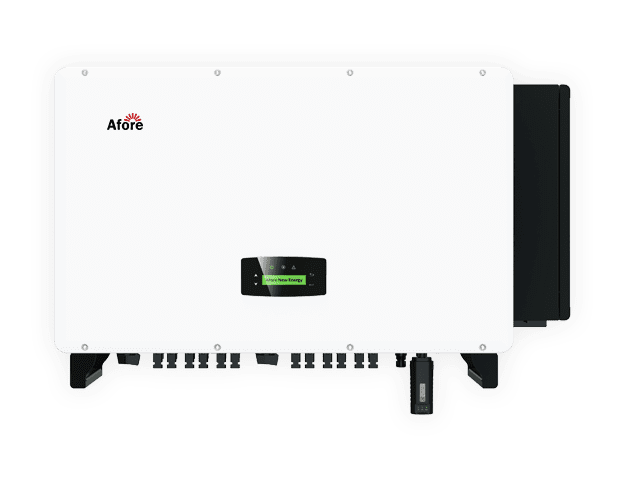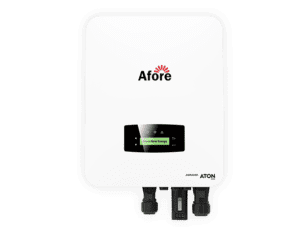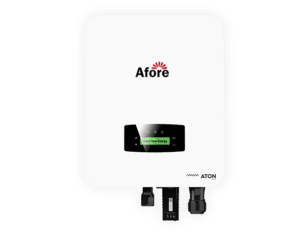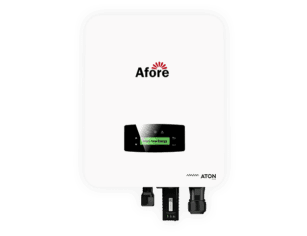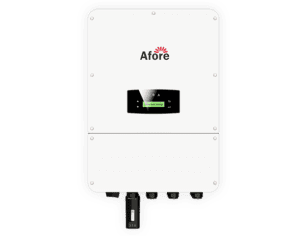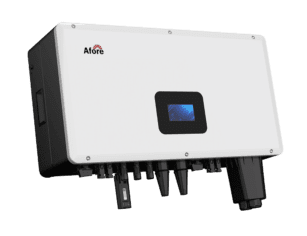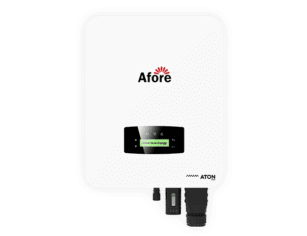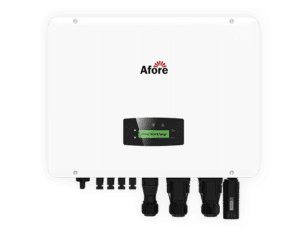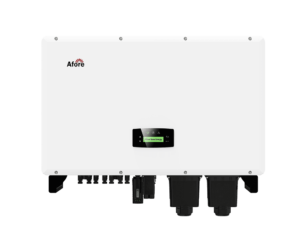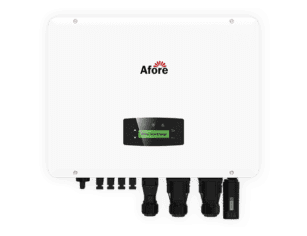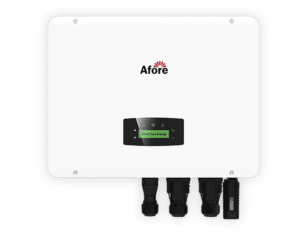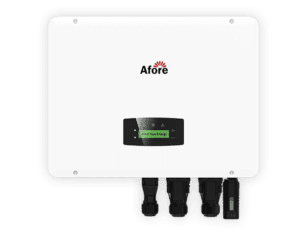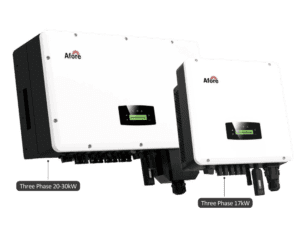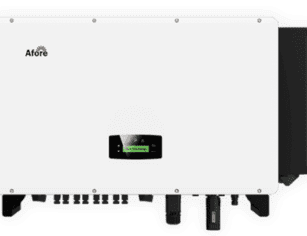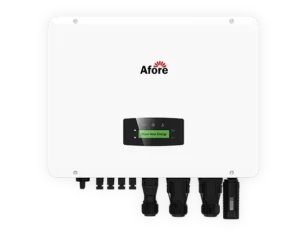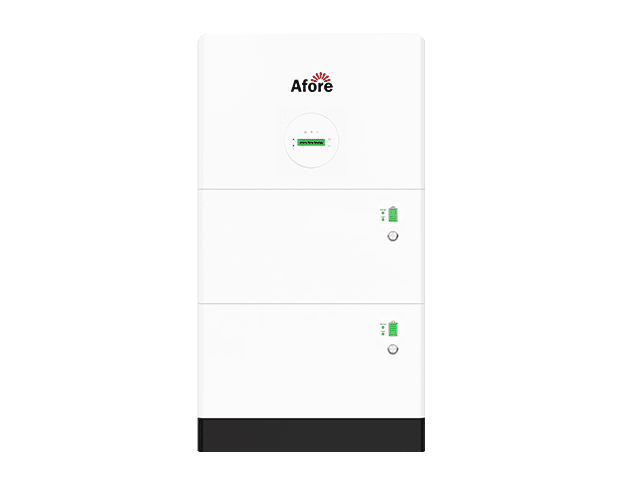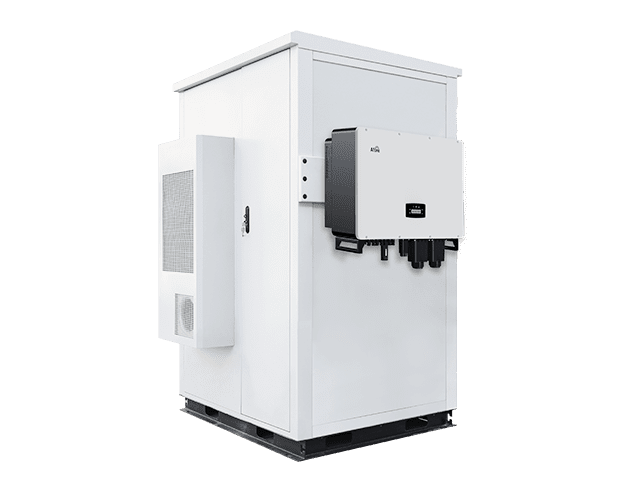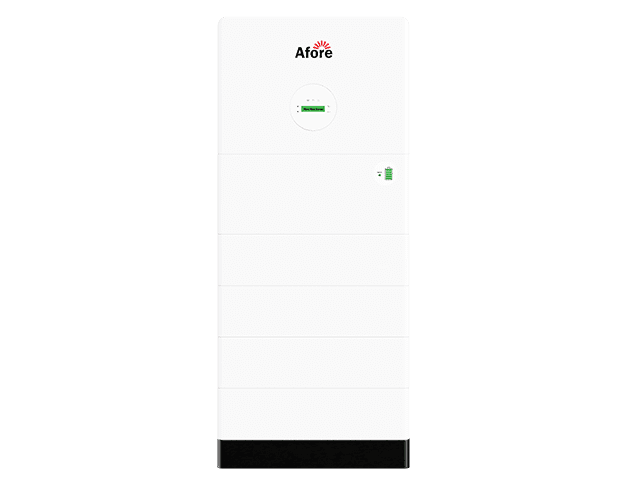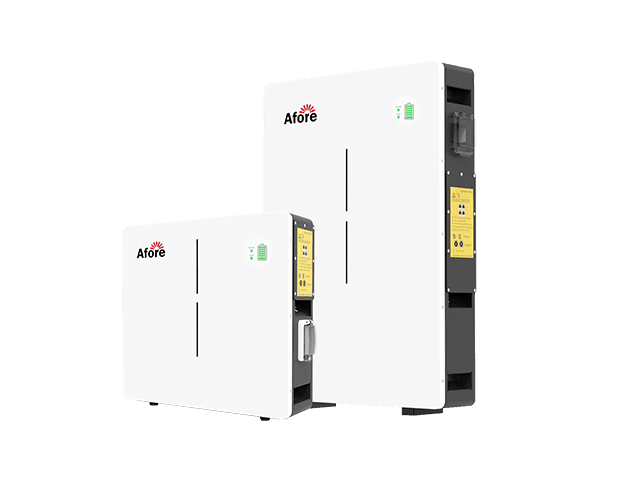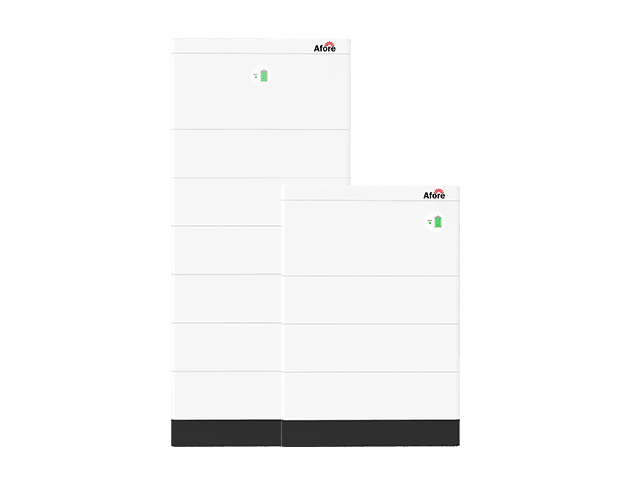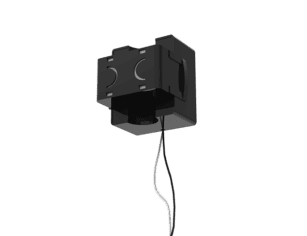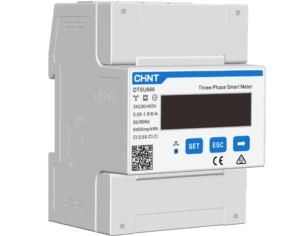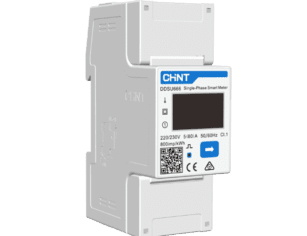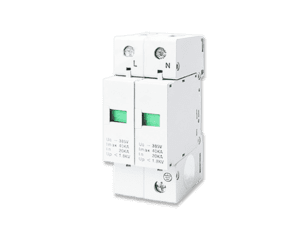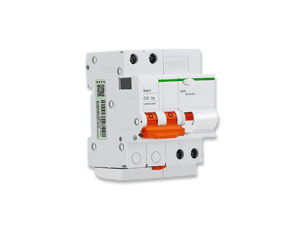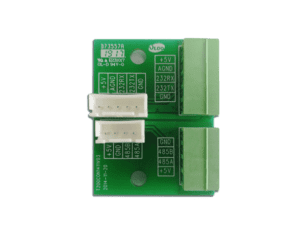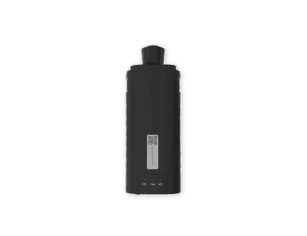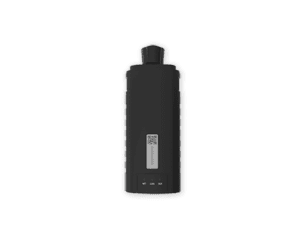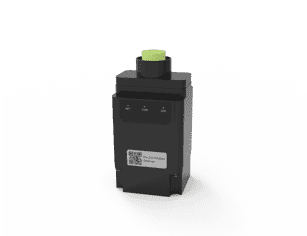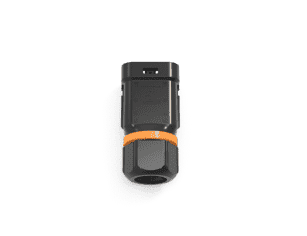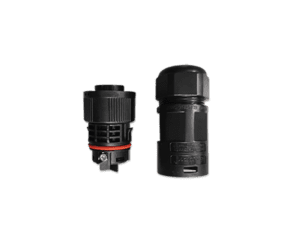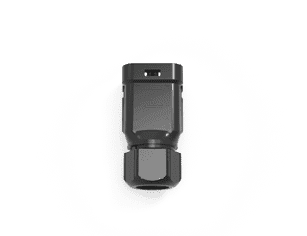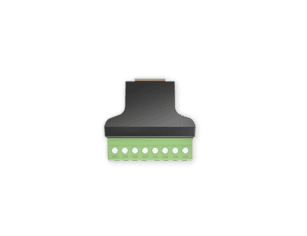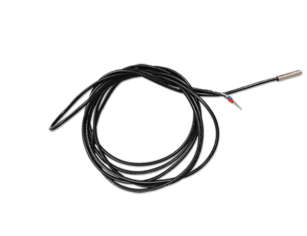Wybór najlepszego inwertera solarnego dla niezależności energetycznej
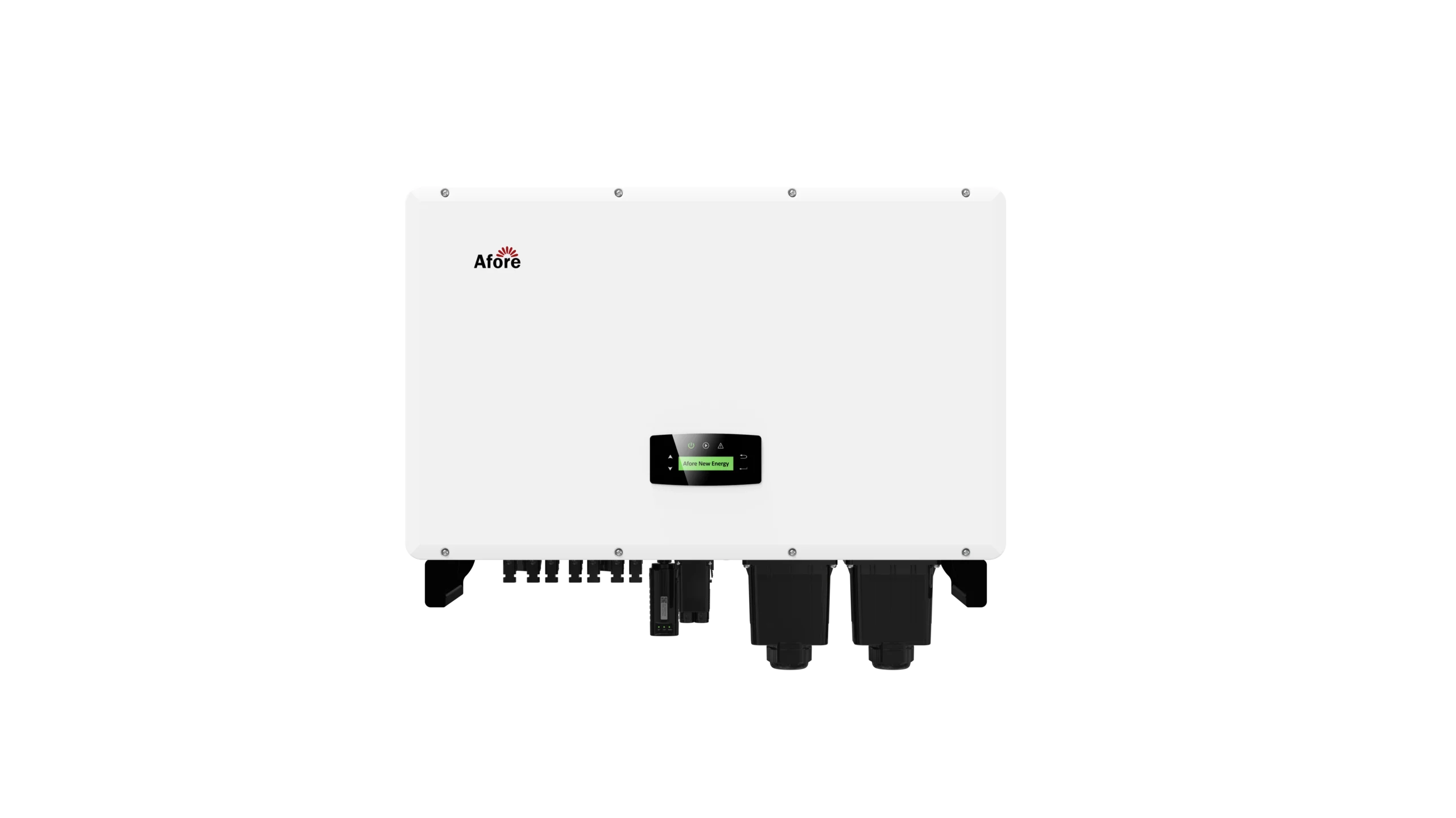
Spis treści
Główna funkcja wyłącznika sieciowego falownik solarny jest przekształcanie prądu stałego w użyteczny prąd przemienny do użytku przez urządzenia gospodarstwa domowego. Bez podłączenia do sieci energetycznej potrzebny jest najlepszy inwerter solarny, aby zapewnić stabilne zasilanie z paneli słonecznych do domu.
Najlepsze inwertery solarne off grid mogą również ładować samochody elektryczne i magazynować energię do wykorzystania w przyszłości. Wspaniałą rzeczą w posiadaniu inwertera falownik solarny jest to, że możesz być całkowicie niezależny i nie musisz polegać na innych, mniej wiarygodnych dostawcach.
Dlatego ten blog został napisany w celu wprowadzenia falowników słonecznych poza siecią i niektórych różnych ich typów. Polecimy również 3 najlepsze falowniki słoneczne poza siecią, aby pomóc Ci wybrać jeden.
Wprowadzenie to Off Grid Falowniki solarne
Inwertery solarne poza siecią obejmują magazynowanie baterii i panele słoneczne, dzięki czemu można uzyskać energię z obu źródeł w domu.
Zazwyczaj inwertery solarne pobierają energię z paneli słonecznych, aby zasilać dom rano i korzystać z akumulatorów w nocy.
Inwertery solarne poza siecią kontrolują przepływ energii, która kontroluje zarówno źródła prądu stałego, jak i zmiennego, które są następnie wykorzystywane do zastąpienia tradycyjnej energii elektrycznej we własnym domu.
Ten typ falownika jest idealny dla tych, którzy chcą wykorzystać energię słoneczną do zasilania swoich domów. Każdy z nas ma różne rodzaje urządzeń, takie jak telewizory, urządzenia kuchenne, pralki i oświetlenie, których używamy w domu.
Samo to wymaga dużej ilości energii, aby je oświetlić, zwłaszcza jeśli chcesz, aby działały 24 godziny na dobę, 7 dni w tygodniu. Dlatego inwertery solarne poza siecią konwertują i przechowują energię, którą można wykorzystać w dzień i w nocy, aby zapewnić działanie wszystkich urządzeń bez zwiększania rachunków za energię elektryczną.
Systemy zasilania poza siecią lub autonomiczne często wymagają bardziej wydajnych falowników akumulatorowych i wbudowanych ładowarek, które można skonfigurować dla systemów solarnych sprzężonych z prądem przemiennym lub stałym. Nowoczesne, elastyczne ładowarki inwerterów solarnych off-grid, znane również jako inwertery wielomodowe, mogą być również wykorzystywane do tworzenia zaawansowanych hybrydowych systemów podłączonych do sieci.
Małe i samodzielne systemy off-grid wykorzystują proste kontrolery ładowania słonecznego MPPT, znane również jako regulatory słoneczne. Nie są to falowniki, ale ładowarki ogniw słonecznych DC, które są podłączone między panelem słonecznym a akumulatorem, aby regulować proces ładowania akumulatora i zapewnić, że akumulator jest prawidłowo naładowany lub, co ważniejsze, nie jest przeładowany.

Różne rodzaje inwerterów solarnych off-grid
Istnieją dwa rodzaje inwerterów solarnych off grid: czysta fala sinusoidalna i zmodyfikowana fala sinusoidalna, które zwykle różnią się trzema aspektami, a mianowicie: jakością mocy wyjściowej, kompatybilnością i ceną. Przetwarzając jakość mocy wyjściowej tych inwerterów solarnych poza siecią, jakość mocy z czystych fal sinusoidalnych jest czystsza. Ponieważ te dwa pomiary nazywane są jakością mocy wyjściowej prądu przemiennego, możliwe jest, że jakość mocy wyjściowej czystej fali sinusoidalnej jest lepsza lub lepsza niż jakość mocy wyjściowej sieci. Dlatego można spekulować, że czyste fale sinusoidalne zapewniają wyższą jakość wyjściową niż zmodyfikowane fale sinusoidalne.
Inwerter solarny typu off grid o wyższej jakości wyjściowej jest uważany za bardziej zalecany, nawet jeśli jest stosunkowo droższy. Oprócz tego powodu, prawie wszystkie urządzenia elektryczne mogą korzystać z tego typu falownika. Innym powodem, dla którego korekta fali sinusoidalnej jest tańsza niż inna, jest to, że może ona powodować pewne uszkodzenia i problemy z niektórymi urządzeniami. Na przykład, pompy i silniki w lodówkach mają tendencję do szybszego przepalania się, a sprężarki pracują w wyższych temperaturach, co prowadzi do uszkodzenia sprzętu.
Oprócz urządzeń, skorygowane fale sinusoidalne mogą również powodować uszkodzenia wrażliwej elektroniki. Ten typ falownika telewizyjnego zwykle powoduje linie i brzęczenie na ekranie, co skutkuje pogorszeniem jakości obrazu i dźwięku. Niektóre urządzenia nie działają całkowicie z tym falownikiem. Jednak nadal można wybrać zmodyfikowaną falę sinusoidalną zamiast czystej fali sinusoidalnej, ponieważ jest ona tańsza, jeśli masz pewność, że będzie działać z urządzeniem lub urządzeniem. Oprócz tych typów falowników można zainstalować wstępnie okablowane centrum zasilania, które zawiera falownik, ładowarkę, pilota zdalnego sterowania i wyłącznik automatyczny, a także monitor baterii i tłumik.
Korzyści płynące z zastosowania inwerterów solarnych poza siecią energetyczną
Podstawową zaletą inwertera solarnego off grid jest niezależność energetyczna. Inne korzyści płynące z tej technologii to możliwość zapewnienia stałych dostaw energii elektrycznej w przypadku przerw w dostawie prądu, nawet w najbardziej odległych obszarach, a także obniżenie rachunków za energię elektryczną przy jednoczesnej ochronie środowiska poprzez uczynienie go czystszym i bardziej ekologicznym.
W przypadku katastrofy społeczności podłączone do głównej sieci energetycznej tracą zasilanie. Takie niedobory mocy lub katastrofy mogą powodować uszkodzenia elektryczne.
Utrata przychodów może również nastąpić, jeśli działalność firmy opiera się głównie na zużyciu energii elektrycznej.
Posiadanie inwertera jest rzeczywiście zaletą, ponieważ prąd stały przechowywany w akumulatorach o głębokim cyklu pracy paneli słonecznych może zapewnić stały dopływ energii elektrycznej do domu po przekształceniu na prąd przemienny.
Jeśli posiadasz inwerter solarny off grid, doświadczysz również wolności finansowej, ponieważ firma sieciowa obniżyła miesięczne rachunki za energię elektryczną, co oznacza, że możesz zaoszczędzić pieniądze w dłuższej perspektywie.
Ponieważ firmy sieciowe nie są w stanie dostarczać energii elektrycznej do niektórych obszarów wiejskich, urządzenie to może pomóc gospodarstwom domowym uzyskać dostęp do tej samej jakości energii elektrycznej, z której korzystają mieszkańcy obszarów wysoce zurbanizowanych. Jest to możliwe, ponieważ przetworzony prąd zmienny pierwotnie pochodzi ze światła słonecznego.
Kolejną zaletą produktu jest to, że zapewnia energię odnawialną i pomaga zazielenić planetę. Energia słoneczna jest dostępna wszędzie, więc urządzenie działa bez względu na to, gdzie jesteś.
Wiadomo, że firmy energetyczne powodują zanieczyszczenie powietrza i inne problemy środowiskowe, a patronowanie tej technologii pomoże ocalić planetę.

3 Najlepszy Off Grid Falowniki solarne
Jednofazowy hybrydowy falownik pamięci masowej 8-12 kW
- Maks. 240 A: Maks. Prąd ładowania/rozładowania 240A
- Nadwymiar PV: 1,5-krotność nadwymiaru PV
- Kanały MPPT: Do 3 kanałów MPPT
- Funkcja UPS: Czas przełączania < 10 ms
- Równolegle: Maks. 6 równoległych stosów
- Wejście: Generator wsparcia
| Dane techniczne | AF8K-SLP | AF9K-SLP | AF10K-SLP | AF11K-SLP | AF12K-SLP |
| Wejście PV | |||||
| Maks. moc wejściowa (kW) | 12 | 13.5 | 15 | 16.5 | 18 |
| Maksymalne napięcie PV (V) | 550 | ||||
| Zakres MPPT (V) | 80-500 | ||||
| Pełny zakres MPPT (V) | 150-500 | 160-500 | 130-500 | 150-500 | 160-500 |
| Napięcie normalne (V) | 360 | ||||
| Napięcie rozruchowe (V) | 100 | ||||
| Maks. Prąd wejściowy (A) | 18.5×3 | ||||
| Maks. prąd zwarciowy (A) | 26×3 | ||||
| Liczba trackerów MPP / liczba ciągów fotowoltaicznych | 3/1+1+2 | ||||
| Port akumulatora | |||||
| Maks. moc ładowania/rozładowania (kW) | 8 | 9 | 10 | 11 | 12 |
| Maks. Prąd ładowania/rozładowania (A) | 200 | 240 | 240 | 240 | 240 |
| Normalne napięcie akumulatora (V) | 51.2 | ||||
| Zakres napięcia akumulatora (V) | 40-60 | ||||
| Typ akumulatora | Li-ion / kwasowo-ołowiowe itp. | ||||
| Sieć prądu przemiennego i generator diesla (opcjonalnie) | |||||
| Maksymalny prąd ciągły (A) | 37 | 41 | 46 | 50 | 55 |
| Maksymalna moc ciągła (kVA) | 8 | 9 | 10 | 11 | 12 |
| Znamionowy prąd sieci (A) | 37/35 | 41/39 | 46/44 | 50/48 | 55/52 |
| Nominalne napięcie sieci (V) | 198 do 242 @ 220 / 207 do 253 @ 230 | ||||
| Nominalna częstotliwość sieci (Hz) | 50/60 | ||||
| Współczynnik mocy | 0,999 (Regulacja od 0,8 nadmiernego pobudzenia do 0,8 niedostatecznego pobudzenia) | ||||
| Prąd THD (%) | <3 | ||||
| Wyjście obciążenia AC | |||||
| Maksymalny prąd ciągły (A) | 37 | 41 | 46 | 50 | 55 |
| Maksymalna moc ciągła (kVA) | 8 | 9 | 10 | 11 | 12 |
| Maksymalny prąd szczytowy (A) (10 min) | 55.5/52.5 | 61.5/58.5 | 69/66 | 75/72 | 82.5/78 |
| Maksymalna moc szczytowa (KVA) (10 min) | 12 | 13.5 | 15 | 16.5 | 18 |
| Nominalne napięcie AC L-N (V) | 220/230 | ||||
| Nominalna częstotliwość prądu przemiennego (Hz) | 50/60 | ||||
| Czas przełączania (ms) | Bezszwowy | ||||
| THD napięcia (%) | <3 | ||||
| Wydajność | |||||
| Europejska wydajność (%) | 98.1 | ||||
| Maks. Wydajność (%) | 96.8 | ||||

Trójfazowa hybrydowa pamięć masowa Falownik 3-30 kW
- Akumulator sodowo-metalowo-chlorkowy: Wsparcie dla akumulatorów sodowo-metalowo-chlorkowych
- Szeroki zakres: Zakres napięcia (150-800 V)
- 100% Niezrównoważenie: Obsługa obciążenia niewyważonego
- Nadwymiar PV: 1,5-krotność nadwymiaru PV
- Max.40Adc: Prąd ciągu do 40A
- Funkcja UPS: Czas przełączania< 10ms
- Wejście: Generator wsparcia
| Dane techniczne | AF3K-TH | AF4K-TH | AF5K-TH | AF6K-TH | AF8K-TH | AF10K-TH |
| Wejście PV | ||||||
| Maksymalna moc wejściowa DC (kW) | 5 | 6 | 7.5 | 9 | 12 | 15 |
| Maksymalne napięcie PV (V) | 1000 | |||||
| Znamionowe napięcie wejściowe DC (V) | 620 | |||||
| Zakres napięcia wejściowego DC (V) | 150-1000 | |||||
| Zakres napięcia MPPT (V) | 150-850 | |||||
| Pełny zakres MPPT (V) | 200-850 | 250-850 | 300-850 | 500-850 | ||
| Napięcie rozruchowe (V) | 160 | |||||
| Maks. prąd wejściowy DC (A) | 20×2 | |||||
| Maks. Krótki prąd (A) | 30×2 | |||||
| Liczba trackerów/ciągów MPPT | 2/2 | |||||
| Port akumulatora | ||||||
| Napięcie znamionowe akumulatora (V) | 200 | 250 | 300 | 400 | ||
| Zakres napięcia akumulatora (V) | 150-800 | |||||
| Maks. Prąd ładowania/rozładowania (A) | 30 | 30 | 30 | 30 | 30 | 30 |
| Maks. Moc ładowania/rozładowania (kW) | 3 | 4 | 5 | 6 | 8 | 10 |
| Krzywa ładowania | 3 Etapy | |||||
| Kompatybilny typ baterii | Akumulator litowo-jonowy / kwasowo-ołowiowy / chlorkowo-sodowy | |||||
| AC Grid | ||||||
| Nominalna moc wyjściowa AC (kW) | 3 | 4 | 5 | 6 | 8 | 10 |
| Maks. moc wejściowa/wyjściowa AC (kVA) | 4.5/3.3 | 6/4.4 | 7.5/5.5 | 9/6.6 | 12/8.8 | 15/11 |
| Maks. prąd wyjściowy AC (A) | 5.3 | 7 | 8.5 | 10.5 | 13.5 | 17 |
| Nominalne napięcie AC (V) | 230/400 | |||||
| Nominalna częstotliwość prądu przemiennego (Hz) | 50/60 | |||||
| Współczynnik mocy | 1(-0,8-0,8) regulowany | |||||
| Prąd THD (%) | <3% | |||||
| Wyjście obciążenia AC (rezerwowe) | ||||||
| Nominalna moc wyjściowa (VA) | 3000 | 4000 | 5000 | 6000 | 8000 | 10000 |
| Nominalne napięcie wyjściowe (V) | 230/400 | |||||
| Nominalna częstotliwość wyjściowa (Hz) | 50/60 | |||||
| Nominalny prąd wyjściowy (A) | 4.4 | 5.8 | 7.3 | 8.7 | 11.6 | 14.5 |
| Szczytowa moc wyjściowa | 3300VA, 60s | 4400VA, 60s | 5500VA, 60s | 6600VA, 60s | 8800VA, 60s | 11000VA, 60s |
| THDV (z obciążeniem liniowym) | <3% | |||||
| Czas przełączania (ms) | <10 | |||||
| Wydajność | ||||||
| Efektywność w Europie | 97.50% | |||||
| Maks. Wydajność | 98.00% | 98.20% | ||||
| Wydajność ładowania/rozładowania akumulatora | 98.00% | |||||
| Dane techniczne | AF12K-TH | AF15K-TH | AF17K-TH | AF20K-TH | AF25K-TH | AF30K-TH |
| Wejście PV | ||||||
| Maksymalna moc wejściowa DC (kW) | 18 | 22.5 | 25.5 | 30 | 37.5 | 45 |
| Maks. napięcie PV (V) | 1000 | |||||
| Znamionowe napięcie wejściowe DC (V) | 620 | |||||
| Zakres napięcia wejściowego DC (V) | 150-1000 | |||||
| Zakres napięcia MPPT (V) | 150-850 | |||||
| Pełny zakres MPPT (V) | 500-850 | |||||
| Napięcie rozruchowe (V) | 160 | |||||
| Maks. prąd wejściowy DC (A) | 20×2 | 20+32 | 32×2 | 32×2 | 40×2 | 40×2 |
| Prąd maksymalnego zwarcia (A) | 30×2 | 30+48 | 48×2 | 48×2 | 60×2 | 60×2 |
| Liczba trackerów/ciągów MPPT | 2/2 | 2/3 | 2/4 | 2/4 | 2/4 | 2/4 |
| Port akumulatora | ||||||
| Napięcie znamionowe akumulatora (V) | 450 | 500 | 400 | 500 | 500 | 550 |
| Zakres napięcia akumulatora (V) | 150-800 | |||||
| Maksymalny prąd ładowania/rozładowania (A) | 30 | 50 | 50 | 50 | 60 | 60 |
| Maks. moc ładowania/rozładowania (kW) | 12 | 15 | 17 | 20 | 25 | 30 |
| Krzywa ładowania | 3 Etapy | |||||
| Kompatybilny typ baterii | Akumulator litowo-jonowy / kwasowo-ołowiowy / chlorkowo-sodowy | |||||
| AC Grid | ||||||
| Nominalna moc wyjściowa AC (kW) | 12 | 15 | 17 | 20 | 25 | 30 |
| Maks. moc wejściowa/wyjściowa AC (kVA) | 18/13.2 | 22.5/16.5 | 25.5/18.7 | 30/22 | 37.5/27.5 | 45/33 |
| Maks. prąd wyjściowy AC (A) | 21.5 | 27 | 30 | 32 | 40 | 48 |
| Nominalne napięcie AC (V) | 230/400 | |||||
| Nominalna częstotliwość prądu przemiennego (Hz) | 50/60 | |||||
| Współczynnik mocy | 1 (-0,8-0,8) regulowany | |||||
| Prąd THD (%) | <3% | |||||
| Wyjście obciążenia AC (rezerwowe) | ||||||
| Nominalna moc wyjściowa (VA) | 12000 | 15000 | 17000 | 20000 | 25000 | 30000 |
| Nominalne napięcie wyjściowe (V) | 230/400 | |||||
| Nominalna częstotliwość wyjściowa (Hz) | 50/60 | |||||
| Nominalny prąd wyjściowy (A) | 17.4 | 21.8 | 24.7 | 29 | 36.3 | 43.5 |
| Szczytowa moc wyjściowa | 13200VA, 60s | 16500VA, 60s | 18700VA, 60s | 22000VA, 60s | 27500VA, 60s | 33000VA, 60s |
| THDV (z obciążeniem liniowym) | <3% | |||||
| Czas przełączania (ms) | <10 | |||||
| Wydajność | ||||||
| Efektywność w Europie | 97.50% | 97.80% | 98.00% | 98.10% | ||
| Maksymalna wydajność | 98.30% | 98.50% | ||||
| Wydajność ładowania/rozładowania akumulatora | 98.00% | |||||

Trójfazowy falownik fotowoltaiczny typu string 40-60 kW Seria niskonapięciowa
- SMART: Inteligentne monitorowanie łańcucha, Inteligentne skanowanie krzywej l-V
- OCHRONA: Ochrona przed oświetleniem DC i AC typu II
- MAX.38Adc: Prąd ciągu do 38A
- PV OVERSIZE: >1,5 Czas wejścia PV Oversize
- WSPÓŁCZYNNIK MOCY: Kompensacja mocy czynnej i biernej
- ANTI-FLOW: Funkcja zapobiegająca podawaniu
| Dane techniczne | BNT040KTA | BNT050KTA | BNT060KTA |
| Dane wejściowe PV | |||
| Maks. Moc DC (W) | 60000 | 75000 | 90000 |
| Maks. napięcie DC (V) | 750 | ||
| Zakres napięcia MPPT (V) | 200-750 | ||
| Zakres napięcia pełnej mocy MPPT (V) | 300-750 | ||
| Znamionowe napięcie wejściowe (V) | 400 | ||
| Napięcie rozruchowe (V) | 200 | ||
| Maks. prąd wejściowy (A) | 38×6 | ||
| Maks. Prąd zwarcia (A) | 48×6 | ||
| Liczba trackerów MPP / liczba ciągów fotowoltaicznych | 6/12 | ||
| Typ złącza wejściowego | MC4 | ||
| Dane wyjścia AC | |||
| Maks. Moc wyjściowa (VA) | 44000 | 55000 | 66000 |
| Nominalna moc wyjściowa (W) | 40000 | 50000 | 60000 |
| Maks. Prąd wyjściowy (A) | 120 | 143 | 158 |
| Nominalne napięcie wyjściowe( V) | 3P+N+PE/3P+PE 133/230 | ||
| Zakres napięcia sieci | 180Vac-260Vac (zgodnie z lokalną normą) | ||
| Nominalna częstotliwość wyjściowa (Hz) | 50/60 | ||
| Zakres częstotliwości siatki | 45-55Hz/54-66Hz (zgodnie z lokalnym standardem) | ||
| Współczynnik mocy wyjściowej | 1 wartość domyślna (regulowana w zakresie od 0,8 z wyprzedzeniem do 0,8 z opóźnieniem) | ||
| Prąd wyjściowy THD | <3% | ||
| Wydajność | |||
| Maks. Wydajność | 99.00% | ||
| Euro Efficiency | 93.00% | 98.40% | |

Co jest najlepsze poza siecią? Co wspólnego mają falowniki solarne?
Najlepsze inwertery off grid to rozwiązania typu „wszystko w jednym”. Łączą one w sobie trzy podstawowe części w konfiguracji wstępnie okablowanej:
- Kontroler ładowania słonecznego MPPT
- Falownik sinusoidalny
- Ładowarka AC na DC (generator/ładowarka zapasowa)
Ponadto wszystkie obsługują najnowsze baterie litowe i mają dedykowaną aplikację do monitorowania w chmurze i konfiguracji online.
Jak wybrać najlepszą ofertę Inwerter solarny do sieci?
Napięcie wyjściowe falownika
Będzie ono oparte na wymaganiach dotyczących obciążenia i zwykle jest takie samo jak standardowe napięcie/częstotliwość zasilania w danym kraju/regionie. Napięcie wyjściowe inwertera solarnego poza siecią powinno odpowiadać napięciu znamionowemu obciążenia. 240 V w Europie i Afryce oraz 120 V w USA. Falowniki powinny pracować z częstotliwością 50 Hz w Afryce i Europie oraz 60 Hz w Stanach Zjednoczonych.
Zakres mocy falownika
W przypadku sprzętu solarnego ważny jest zakres mocy. Należy upewnić się, że wybrany sprzęt jest w stanie zaspokoić zapotrzebowanie na moc. Nawet jeśli masz wystarczająco dużo paneli, aby wygenerować odpowiednią ilość energii, nie ma to większego sensu, jeśli falownik nie poradzi sobie z obciążeniem. Dlatego ważny jest również zakres mocy falownika. Poniżej przedstawiono różne zakresy mocy falowników i ich typowe zastosowania:
- 1 do 2 kW: Mała kabina z oświetleniem, telewizorem, lodówką i telefonem.
- 2 do 4 kW: Większe domki i niektóre małe energooszczędne domy.
- 4 do 8 kW: Większość domów poza siecią.
- 8 do 16 kW: większe domy poza siecią, gospodarstwa rolne lub rancza oraz małe firmy.
Chociaż rozmiary falowników są większe i mniejsze niż te wymienione powyżej, są to najpopularniejsze opcje, przy czym preferowane są 4 kW i 8 kW.
Wejście napięcia stałego falownika
Po wybraniu mocy i marki/producenta falownika solarnego, w arkuszu specyfikacji falownika znajdzie się odpowiedni zakres napięcia wejściowego DC i musimy wybrać napięcie akumulatora, aby je dopasować.
Falownik z wbudowanym kontrolerem ładowania słonecznego będzie MPPT lub PWM
MPPT jest technicznie lepszy, ponieważ jest w stanie przekształcić wysokie napięcie panelu słonecznego na niższe napięcie, dzięki czemu ładuje akumulator z niskimi stratami (wysoka wydajność), ale kosztuje więcej niż typ PWM. Z drugiej strony, jeśli możemy prawidłowo wybrać typ kontrolera ładowania słonecznego PWM zgodnie ze specyfikacją panelu słonecznego, możemy potwierdzić, że może on działać równie dobrze jak typ kontrolera ładowania MPPT.
Rozważ czyste fale sinusoidalne zamiast zmodyfikowanych fal sinusoidalnych
Niektórzy producenci mogą mówić o falownikach sinusoidalnych. Nie trzeba dokładnie wiedzieć, jak one działają. Wystarczy wiedzieć, że moc wyjściowa falownika sinusoidalnego jest „czystsza” niż zmodyfikowanego falownika sinusoidalnego.
Aby falownik sinusoidalny zapewniał wyższą jakość mocy wyjściowej, podobną (lub lepszą) do naszej sieci. Zmodyfikowane falowniki sinusoidalne są tańsze, ale zapewniają niższą jakość zasilania.
Z tego powodu ulepszone falowniki sinusoidalne mogą powodować problemy z niektórymi urządzeniami. Silniki, pompy i sprężarki nagrzewają się bardziej i szybciej się zużywają. W przypadku niektórych wrażliwych urządzeń (np. komputerów) mogą one ulec uszkodzeniu lub w ogóle nie działać. Falowniki te często generują również szumy w tle w stereo i pogarszają jakość obrazu i dźwięku w niektórych telewizorach.
Dlatego też nie zalecamy stosowania zmodyfikowanych falowników sinusoidalnych w większości zastosowań; większość naszych klientów off-grid używa falowników czystej fali sinusoidalnej, aby uniknąć tych potencjalnych problemów.
Potrzebujesz szybkiego sposobu na rozróżnienie? Sprawdź całkowite zniekształcenia harmoniczne (THD) falownika. THD jest wskaźnikiem jakości mocy wyjściowej, który będzie wymieniony w arkuszu specyfikacji każdego dobrego falownika. Aby uniknąć kłopotów, należy wybrać falownik o czystej fali sinusoidalnej i współczynniku THD 5% lub niższym.
Spójrz na specyfikację techniczną
- Wydajność: Jest to miara ilości energii dostarczanej przez baterię inwertera solarnego do domu podczas pracy w idealnych warunkach. Dobra sprawność szczytowa wynosi około 94 do 96 procent.
- Zakres temperatur: Falowniki solarne są bardzo gorące. Jeśli planujesz zainstalować system solarny w garażu lub w innym miejscu, które może być narażone na ekstremalne temperatury, zwróć szczególną uwagę na zakres temperatur.
- Gwarancja: Falowniki solarne są objęte roczną gwarancją, zazwyczaj 3-5-letnią, a niektórzy producenci oferują opcję przedłużenia gwarancji do 10 lat. Afore oferuje standardową gwarancję fabryczną, która jest ważna 5 lat od daty instalacji i nie dłużej niż 5 i pół roku od daty dostawy z Afore.

Wnioski
Inwerter solarny off grid jest absolutnie niezbędnym elementem dla tych, którzy szukają niezależności energetycznej. Jest to szczególnie ważne w przypadku odległych obszarów lub tych, którzy chcą zmniejszyć swoją zależność od tradycyjnych dostawców energii elektrycznej. Najlepsze inwertery solarne off grid mają wiele zalet. Obejmują one możliwość konwersji i magazynowania energii słonecznej, zapewnienia zasilania awaryjnego w przypadku awarii zasilania oraz obniżenia rachunków za energię elektryczną w czasie. Występują one w różnych typach, takich jak czyste falowniki sinusoidalne i zmodyfikowane falowniki sinusoidalne, przy czym modele z czystą falą sinusoidalną są bardziej zalecane ze względu na ich wysoką jakość wyjściową i kompatybilność z szerszą gamą urządzeń. Najlepsze inwertery solarne off-grid zwykle integrują kontroler ładowania MPPT, falownik sinusoidalny i zapasowy system ładowania, aby zapewnić wydajność i niezawodność. Biorąc pod uwagę moc falownika, zakres napięcia i jakość wyjściową, można wybrać najlepsze rozwiązanie spełniające potrzeby i przyczyniające się do bardziej ekologicznej, zrównoważonej przyszłości energetycznej.




